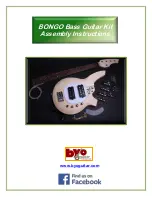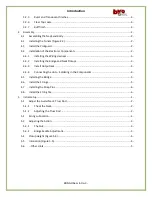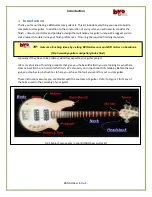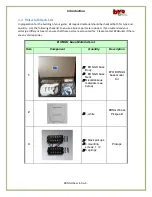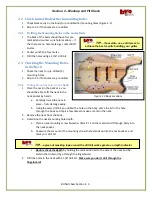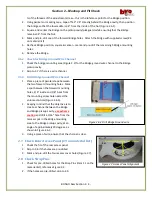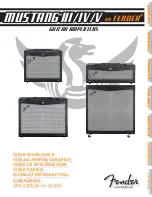
Introduction
BONGO bass Intro- 1 -
Warning
These instructions assume that you are familiar with the safe operation and use of woodworking machinery
and woodworking tools, and understand the techniques used to assemble this project. If you do not qualify
for both of these criteria, STOP building this project for your own safety. Read and understand the owner’s
manual for the machinery you intend to use, take a woodworking class or visit your local library for more
information. Woodworking machinery and tools are inherently dangerous because they use sharp edges
that can and will cause serious personal injury including amputation and death. Do not underestimate the
ability of these tools and machinery to cause injury. Never operate any tool without all guards in place and
always wear approved safety glasses. For your own safety, please heed this warning.
Warning
Always wear safety glasses or goggles when operating equipment. Everyday glasses or reading glasses are
not safety glasses. Be certain the safety glasses you wear meet the appropriate standards of the American
National Standards Institute (ANSI). Because there are various ways to cut and join wood, you can make
substitutions for the methods stated in this manual. We try to suggest the easiest methods possible.
However, only you know your skills with each piece of machinery. Never compromise your safety by using
a cutting method with which you are not comfortable. Instead, find an alternative approach that will yield
the same result.
WARNING
Some dust created by power sanding, sawing, grinding, drilling, and other construction activities contains
chemicals known to the State of California to cause cancer, birth defects or other reproductive harm.
Some examples of these chemicals are:
Lead from lead-based paints.
Crystalline silica from bricks, cement, and other masonry products.
Arsenic and chromium from chemically treated lumber.
Your risk from these exposures varies, depending on how often you do this type of work. To reduce your
exposure to these chemicals: work in a well ventilated area, and work with approved safety equipment,
such as those dust masks that are specially designed to filter out microscopic particles.

